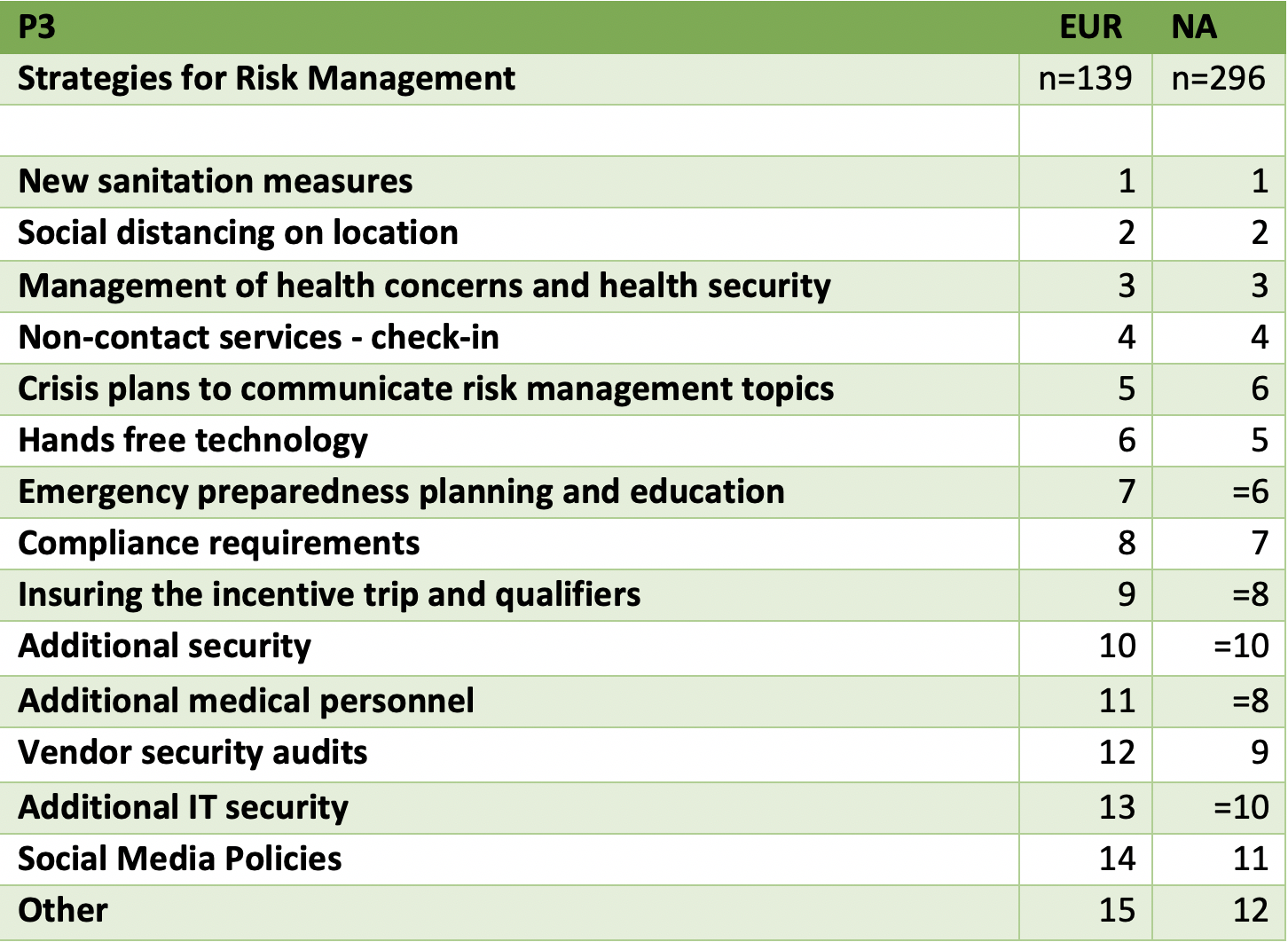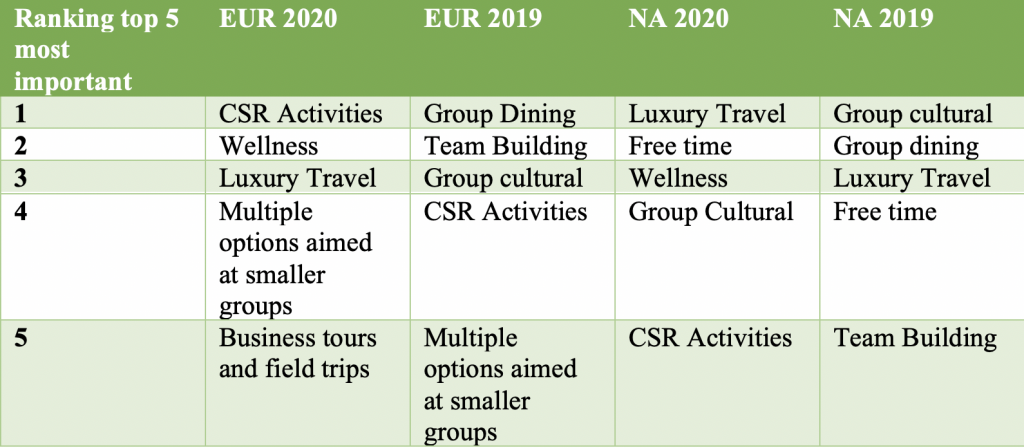European Buyers
If we look at European buyers, the group related activities that were important in 2019 have fallen out of the top 5 (Team building, group cultural and group dining). Instead, buyers are more interested in the luxury travel or bucket list element of incentive travel. This could stem from a total absence of travel or indulgence this year, so incorporating this luxury feel into an incentive programme is seen to be vital.
Wellness related activities and CSR also come out on top in 2020 for European buyers. This is no surprise – as this year has proven more than ever the importance of mental health, wellness and community. The strong emphasis seen by European buyers in relation to CSR activities strives from the need to be involved in sustainability related issues – not just environmental, but also community. Now more than ever, people want to feel involved, that they are making a difference and this is obvious in the demand for CSR activities.
In 2019 European buyers had a focus on activities that promoted cohesion, connections and relationships. However, this year there has been an overall shift towards more individual or personalised programmes i.e. small group activities, luxury travel.
North American Buyers
When we look at North American buyers, group dining and team building have fallen out of the top 5, with an emphasis now more on luxury aspects and free time, as well as a shift towards individual and personalised programmes.
Wellness comes out strongly for the North American buyers also, and while CSR is not as prominent as it is for European buyers, it is still within the top 5, showing an overall shift towards a more community driven and environmentally conscious programme.
Conclusion
Overall there are drastic differences between European and North American buyers – and whilst these target markets have always been treated differently by suppliers, their differences are more prominent than ever now.
European buyers are more cautious about the future – incentive travel will return but at a slower pace that its North American counterparts. When it does return, destination choices will have changed and a whole new market will have opened up for European suppliers. Buyers are looking for domestic, or close locations and Europe offers this in abundance, especially with the possibility of traveling by train (which is also better for sustainable travel!). When it comes to overall programme design and inclusions, European buyers are drifting slightly more towards their North American counterparts who want luxury and bucket list activities. While traditionally these activities were marketed by European suppliers to the North American market, now the European suppliers can market these closer to home.
CSR and wellness have also increased in prominence in both markets. As Covid19 has shown, there is nothing more important than our physical and mental health and unless we look after it and acknowledge it, health and our wider economies will suffer.








